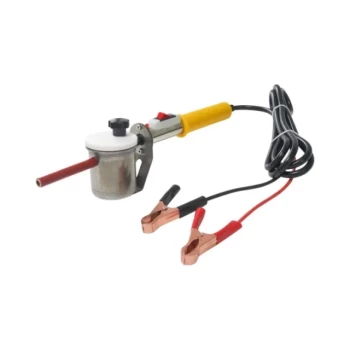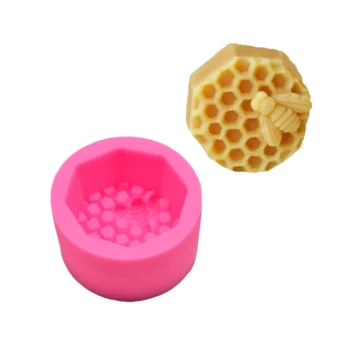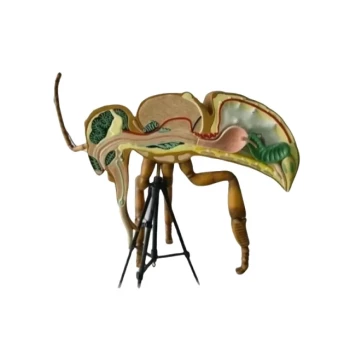Varroa mites reproduce exclusively inside the sealed brood cells of a honey bee colony. A mated female mite invades a cell containing a bee larva just before the worker bees cap it with wax. She and her offspring then feed on the developing bee pupa throughout its transformation, emerging with the adult bee to repeat the cycle.
The core problem for beekeepers is not the mites you see on adult bees, but the exponential population growth happening invisibly within the hive's sealed nursery. Understanding this hidden reproductive cycle is the key to effective management.
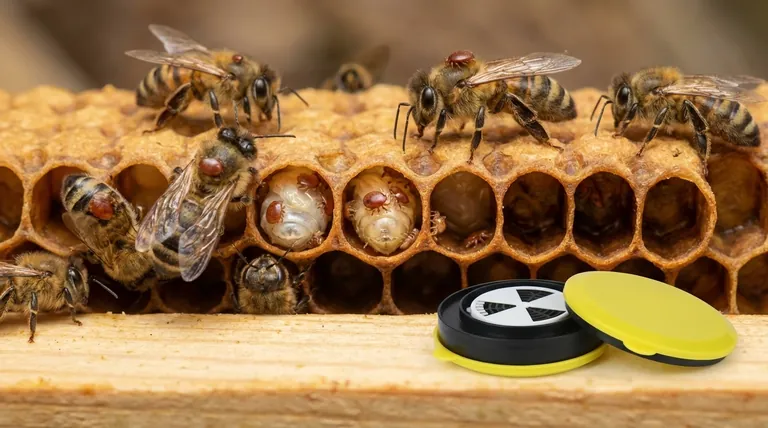
The Two Phases of the Varroa Mite Lifecycle
To understand Varroa reproduction, you must recognize that the mite's life is split into two distinct phases. Each phase serves a different purpose for the mite and presents a different challenge to the colony.
The Phoretic Phase: The Visible Carrier
The phoretic phase is when a female mite is attached to an adult honey bee. During this time, the mite is essentially in a transport mode.
She feeds on the bee's fat body tissue, which is a vital organ for immune function, nutrient storage, and detoxification. While this feeding weakens the individual bee, the mite cannot reproduce during this stage.
This is the only time you can easily see mites with the naked eye. Mites in this phase are waiting for the right opportunity to enter a brood cell to begin their reproductive cycle.
The Reproductive Phase: The Hidden Threat
The reproductive phase is where the real damage to the colony occurs. This entire process happens out of sight, underneath the protective wax capping of a brood cell.
This hidden cycle is why mite populations can explode seemingly overnight, as a large percentage of the hive's total mite population is always concealed within the brood.
A Step-by-Step Look Inside the Brood Cell
The mite's reproductive success is perfectly synchronized with the honey bee's developmental timeline. The capped period, which lasts about 12 days for a worker bee, provides an ideal protected incubator.
The Invasion
A mated female mite detaches from an adult bee and enters a brood cell containing a larva that is about to be capped. She slips past the larva and submerges herself in the brood food at the bottom of the cell to avoid being detected and removed by nurse bees.
The Reproductive Cycle
Once the cell is capped, the mite begins to feed on the developing pupa. She then lays her eggs, which hatch, develop through several stages, and mate with each other inside the sealed cell.
The original mother mite and her newly mated daughters all feed on the single, helpless bee pupa throughout its development.
Emergence and Expansion
When the young bee chews its way out of the cell, the original mother mite and her mated female offspring emerge with it. These new mites are immediately ready to begin the phoretic phase, attaching to adult bees and waiting for their own chance to enter a brood cell and reproduce.
This allows for multiple reproductive cycles for every one bee generation, leading to rapid, exponential growth of the mite population.
Understanding the Consequences
The mite's reproductive strategy directly undermines the health and stability of the entire honey bee colony.
Weakening the Next Generation
By feeding on the fat bodies of developing bees, Varroa mites ensure the next generation of workers emerges weakened. These bees often have shorter lifespans, compromised immune systems, and reduced foraging capabilities.
Exploiting Drone Brood
Mites are particularly attracted to male (drone) brood because its longer capped period allows them to produce more offspring per cycle. High infestation levels in drone cells can quickly spill over into the more numerous worker brood cells.
Spreading Between Colonies
The phoretic phase is essential for the mite's spread. When bees from an infested colony drift to a neighboring hive or when a stronger colony robs a weakened one, the hitchhiking mites are transferred, starting a new infestation.
How to Apply This to Your Management Strategy
A clear understanding of the Varroa reproductive cycle directly informs every aspect of an effective management plan.
- If your primary focus is accurate monitoring: Recognize that counting phoretic mites on adult bees (e.g., via a sugar roll or alcohol wash) only reveals the tip of the iceberg, as most of the population is hidden in the brood.
- If your primary focus is effective treatment: Your strategy must account for the protected mites in the brood. Treatments must either penetrate the wax cappings or persist long enough to kill mites as they emerge with the new bees over several weeks.
- If your primary focus is proactive prevention: Interrupting the brood cycle, a technique known as a "brood break," can temporarily halt the mite's ability to reproduce, significantly reducing their population growth.
Controlling Varroa mites is not about eliminating the few you can see, but about disrupting the relentless reproductive engine hidden within the hive.
Summary Table:
| Phase | Location | Mite Activity | Key Impact on Colony |
|---|---|---|---|
| Phoretic | On adult bees | Feeding, transport, waiting | Weakens adult bees, spreads mites |
| Reproductive | Inside sealed brood cells | Feeding on pupa, laying eggs | Exponential population growth, weakens new bees |
Protect Your Apiary's Future with the Right Equipment
Understanding the Varroa mite's lifecycle is the first step; implementing an effective management strategy is the next. HONESTBEE supplies commercial apiaries and beekeeping equipment distributors with the high-quality, wholesale-focused supplies needed to combat this threat. From monitoring tools to treatment solutions, we provide the reliable equipment that supports healthy, productive hives.
Contact HONESTBEE today to discuss your wholesale needs and fortify your beekeeping operation against Varroa mites.
Visual Guide
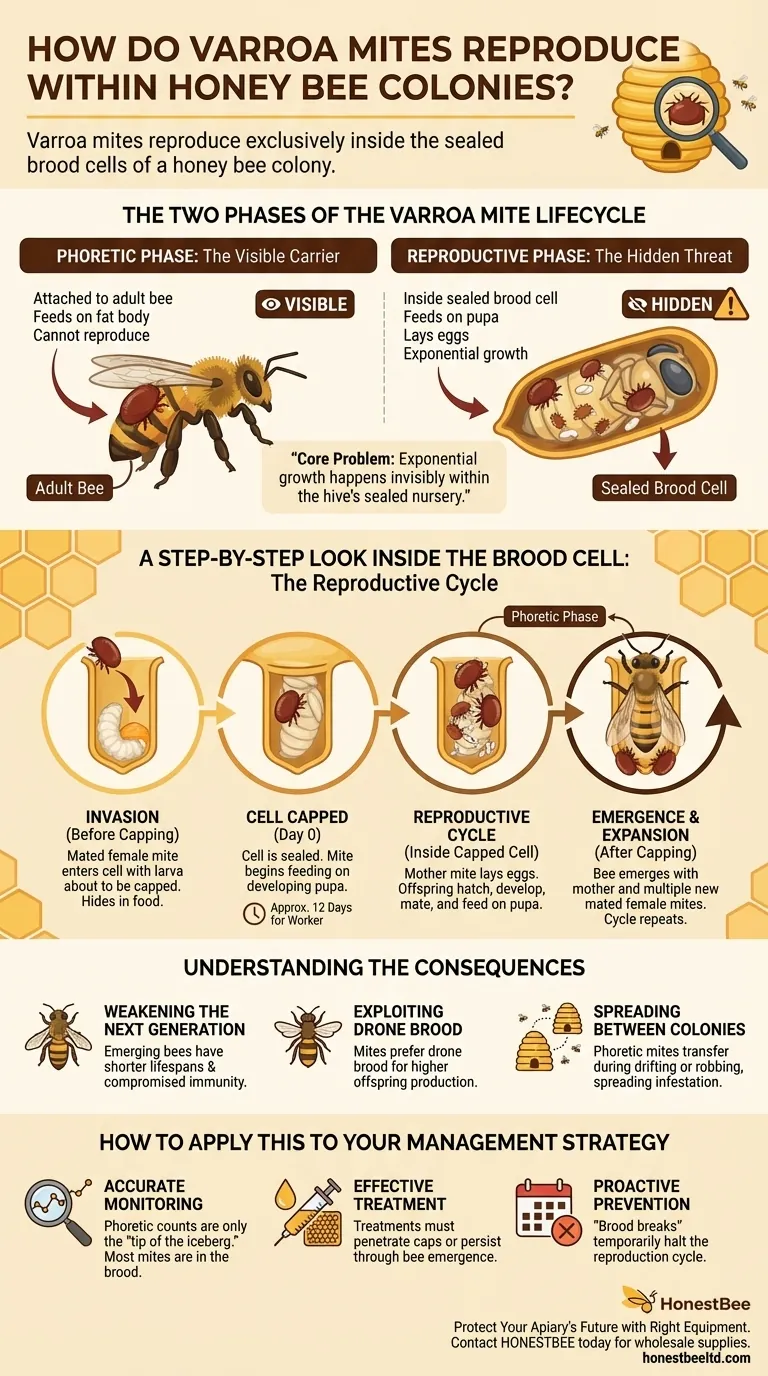
Related Products
- Adjustable Formic and Acetic Acid Dispenser for Bee Mite Treatment
- 12V Bee Mite Removal Evaporator Oxalic Acid Vaporizer for Bee Fumigation Treatment 180W Atomization
- Professional Bamboo Queen Isolation Cage
- Metal Queen Bee Excluder for Beekeeping
- High Performance Plastic Queen Excluder for Beekeeping and Apiary Management
People Also Ask
- What are some common predators and pests that target beehives? Protect Your Hives from Bears, Mites, and Beetles
- What is the focus of hive management during summer? Maximize Your Honey Harvest with Expert Tips
- What is the optimal time for varroa mite control in nucs? Maximize Efficacy with Perfect Timing
- What does Chewed Down Brood (CDB) indicate in bee colonies? A Sign of Varroa Mite Infestation
- What are phoretic mites? A Beekeeper's Guide to Monitoring Varroa Infestation

